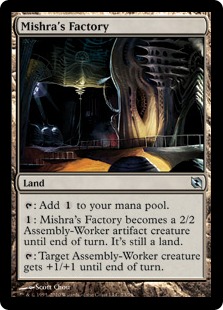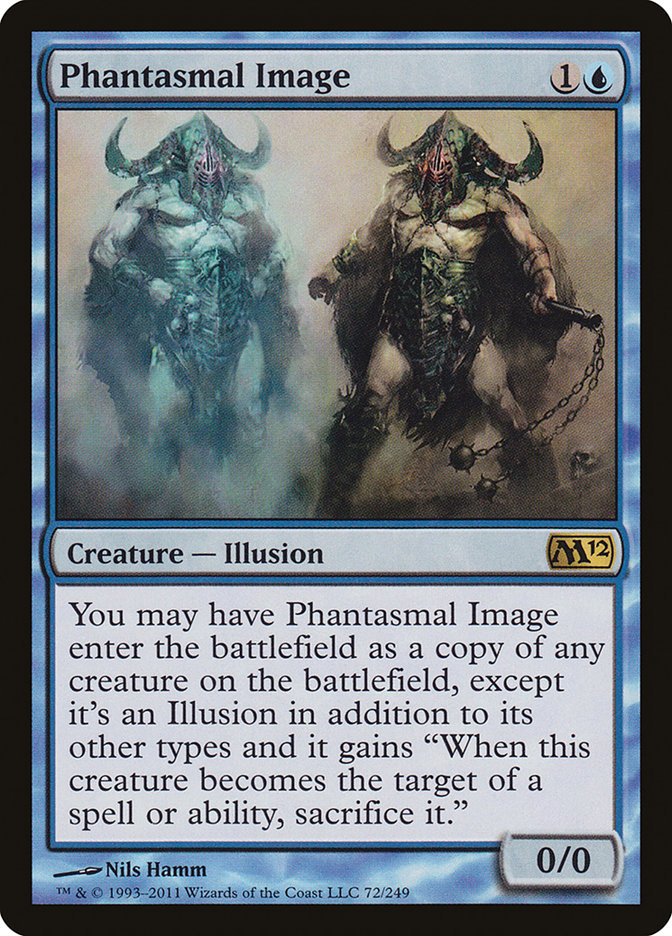Last year the Season Three Invitational went great for me. This year, not so much.
I think that last year my decks were good, but no one gave them much credit. Because they largely went unnoticed, they remained a trivially small part of the metagame and people didn’t bother testing against Infect or Mono-Red at a time where Mono-Black Devotion was the clear deck to beat. Misplays were made on my opponent’s part because of this, and there weren’t many dedicated sideboard slots for the decks I played. This year was different, as everyone knew what I was on.
I needed to change it up somehow, so I decided to go with a bit of the old and a bit of the new.
In Standard, I played a deck that I didn’t play a game with beforehand. Todd Anderson was having great results with his Abzan Hydra deck on Magic Online, and the deck sounded like a sweet take on the Deck To Beat for the weekend, Abzan Hangarback. The unfortunate truth is that Magic Online is flooded with Mono-Red Aggro decks, which Abzan Hydra crushed, way moreso than any deck should. Obviously, when one matchup is improved, others suffer – and Abzan Hydra just wasn’t very good in a larger field. I ended up going 3-1 in Standard on Day One with the deck.
Creatures (18)
- 4 Fleecemane Lion
- 4 Anafenza, the Foremost
- 1 Tasigur, the Golden Fang
- 2 Warden of the First Tree
- 4 Managorger Hydra
- 3 Hangarback Walker
Planeswalkers (2)
Lands (25)
Spells (15)

The deck had some tricks and fairly sound logic behind it. Managorger Hydra grows larger than anything G/R Devotion could offer. The sideboard offered a bunch of “normal” cards, and oftentimes I’d sideboard out four Gather Courage and four Managorger Hydra and turn into a typical Abzan deck… except without Siege Rhino. I’m not 100% sure how the list ended up with no Siege Rhinos in the 75, but clearly it’s a powerful card that needs a very good reason for non-inclusion. Perhaps it’s because it’s a great card against red decks and this version already crushed red so handily.
In Legacy, I played a “stock” Infect deck with a white splash. “Stock” because even though it’s a list that is of my own design, I’d nearly previously played it card-for-card, as have others recently. The Season Three Invitational last year might’ve had five or six Infect players in it, while this one might’ve had thirty or forty. I know that Berserks were sold out at 10AM when I got there Friday morning. People have had time to learn what Infect is capable of and to even playtest against it enough to learn the ins and outs. Infect loses a lot of its value when the opponent knows what you’re up to and how to stop you from killing them. Both I and Aaron Barich played the same 75. He ended up going 7-1, missing out on a really good finish because we were all somehow convinced that Managorger Hydra combined with Gather Courage was a format-breaker. He went 3-5 in Standard with his Naya variant designed the night before.
Sigh, when will we learn?
Creatures (12)
Lands (20)
Spells (28)

I played five Legacy matches before dropping after the ninth round. I went 2-3 in the Legacy portion, losing to Mentor Miracles and splitting my matches against Burn and Temur Delver, which I played twice each. My draws sucked against the Burn and Temur Delver decks and the last-minute cutting of basic Forest from the deck hurt really badly when faced against Wasteland + Stifle and Price of Progress. The Miracles loss was due to poor play. Rather than try to tough it out at 5-4, I joined the Standard Open.
For the first time in nearly six months I had two byes for the Open, which gave me a good amount of confidence going in. I played Abzan Hydra again, as I felt that my 3-1 Invitational record with it was a significant enough sample size of wins to go on (it wasn’t). I demolished my round three opponent in about ten minutes. Everything ran smoothly against a G/R Devotion player, as I even beat his turn-four Dragonlord Atarka handily. Then, as he was signing the match slip 2-0 in my favor, he went to explain how he could’ve cast Dragon Dromoka or Silumgar the Drifting Death instead. Apparently he just didn’t draw the right parts of his deck and my deck ran great.
Great. Let’s do that some more.
From there I went 1-4 before dropping at 4-4. My mind was mush by the eighth round, and the biggest factor to blame was my not getting in more repetitions with the deck before entering the tournament. Out of contention to make Day Two, I left the convention hall early to get some rest.
All was still well and good though. I had one more tournament to play, and I was bringing a spicy one for it.
Creatures (1)
Planeswalkers (4)
Lands (25)
Spells (30)

My girlfriend Hillary played the deck in the Invitational, going 3-1 in Legacy on Day One. She beat Delver twice, an Elves deck, and lost to Omni-Tell. All-in-all, it was about what I expected from Pox, to beat the creature decks but lose to combo.
The deck is based off Reid Duke’s old Legacy Pox deck from 2011 that he made Top Eight of an Invitational with. The idea is that it’s good in a very low-resource environment like Legacy. He did tell me that the Miracles matchup was extremely bad, which is understandable. While the deck is great at removing creatures, cards in hand, and even lands, it has a tough time dealing with artifacts and enchantments like Sensei’s Divining Top and Counterbalance. Luckily, my plan of dodging it worked and I survived nine rounds without facing it.
I played a lot with the Modern version of Pox, and one thing that I learned is that it was very important to draw first. In Legacy, I wasn’t so sure. You can die on turn one fairly often, and the tempo advantage is incredibly important in a world full of Dazes and Spell Pierces. Still, I wanted to know and set out to draw first every chance I got. I ended up being on the draw every game in the tournament except for one when a Death & Taxes player chose to draw in game two after seeing me choose to draw in game one. I lost that game, a game that I would’ve won had I gone second and been one card deeper.
I finished 6-3, losing to Delver twice and Merfolk once. I also beat Reanimator and Dredge in the tournament. Those aren’t quite the results I expected. Somehow the creature decks were beating me but the graveyard decks weren’t? I think the real answer is that the decks with countermagic and Brainstorm are great and the decks that don’t have them aren’t. Also, Dig Through Time is a real pain. Such is Legacy.
I ended up placing 30th of 300-something people with the highest tiebreakers of my bracket. I felt like I played some really good opponents, including Ben Friedman and Noah Walker, both of whom beat me and went on to Top Eight. I learned a lot about the deck, and there is only room for improvement from here on. One interesting interaction that I missed against Ben Friedman and his Merfolk was when he copied his Mutavault with Phantasmal Image. He kept beating me down with the Illusion land and I never had a good opportunity to deal with it. Except for the fact that I could pump his Illusion/Merfolk/Ninja/Assembly-Worker creature with my Mishra’s Factory, killing it upon targeting. There were two such phantom Mutavaults made that game, a game which was very resource-tight and which I think I could’ve won had I noticed the interaction on time.
Moving forward, I can see the second copy of The Tabernacle at Pendrell Vale being moved to the sideboard or even just not being included at all. The card is very expensive and it’s understandable for anyone that wants to omit it to do so. Heck, even the Chains of Mephistopheles in the sideboard isn’t really necessary. I didn’t cast it once in all nine rounds and I doubt it would’ve been stellar even if I had. Still, I wanted to try it out, so much so that I spent about half an hour asking everyone I knew the morning before the tournament started if anyone brought them. Without any luck, I bit the bullet and drained my StarCityGames store credit for one measly, heavily-played, untested and perhaps unnecessary sideboard card. It is a card that I’ve wanted to own for a while now and that I don’t expect to lose value, so I’m happy with my purchase anyway.
The second Raven’s Crime, Chains of Mephistopheles, Shrieking Affliction, Duress, and Tasigur’s Cruelty are all just cards that are in the sideboard because you have to bring out the four copies of Innocent Blood and the Contagion at minimum against creatureless decks like Omni-Tell. Those five slots can be improved, I’m sure, and were really just five cards I picked on short notice when I noticed how poor the sideboard was against control decks without creatures. I was happy to have a Tasigur’s Cruelty in my sideboard though, as it went nicely with my Furious George SCG sleeves.
The Invitationals are getting bigger and bigger, and increasingly more difficult as well. Legacy has started to feel like a “solved” format with little room for a new archetype to slide in and succeed. I’m not sure what can be done to fix Legacy’s stagnation, perhaps it’s banning Dig Through Time, or perhaps nothing needs to be done except for someone to step up and make a good innovation in the format. With a card pool as deep as Legacy, there’s bound to be a solution to the format somewhere. The Invitationals that I’ve done well at have been on the back of good Legacy records and not-embarrassing Standard records. Legacy is a format with so many small edges in play that you can feel unbeatable with the right list, even against nearly the entire existence of Magic against you. As for Standard, you just need to find a deck that you can reach a 60-75% win record with and hope for the best to work out.
Pox is one deck that I’ve been developing that I think could be great with enough effort, but I do have a few more in the works as well. Hopefully I can get a good list for the Season Four Invitational in Las Vegas and make a deep run. This time I just need to play a generic, good, stock Standard deck instead of picking up a fresh one the day of.



